 Thanks: 0
 Likes: 0
 Dislikes: 0
-
Super Member

Picking up a Dewalt DWP849X Rotary?
Well guys, I'm thinking about getting a rotary for my boat. Using a DA would just take too long. I've never used a rotary before but I'm experienced with a DA on paint. I know they are completely different animals, but I heard that it's pretty hard to mess up gel coat. Could you guys give me some tips and is this a good choice for a rotary? BTW I figured it was better to post here as the boat/rv section is pretty much dead.
-
Re: Picking up a Dewalt DWP849X Rotary?
The DeWALT 849X is a GREAT choice for boat detailing. Being a FULL size rotary buffer you have large heavy gears providing lots of reciprocating mass to to really do some chopping on dead, oxidized gel-coat boats.
Here's a couple of articles I've written on this topic...
How to use a rotary buffer
There are a lot of different ways to approach working on any given car, usually you'll want to determine what you're working on, such as new paint, old paint, basecoat clearcoat or single stage paint. Then diagnose the condition of the paint and determine what it is you're going to try to correct, such as removing swirls, scratches, sanding marks, oxidation etc.,
After you have evaluated the paint you can then choose what you think will be the best products and pads for the job
Next you'll want to use the correct technique to apply the products and work them until you've removed all the defects you can to the best of your ability and within what's practical for the paint you're working on. Understand that some defects are too deep and you'll be better off and safer to learn to live with the deeper ones versus trying to remove them all the way and risk removing too much paint.
When you're first learning how to use a rotary buffer, it's a good idea to just tackle a single panel your first time. Considering you have to do the rotary buffer step and then after that a number of more steps until you get the paint up to the waxing step, just tackling a panel, like the hood of a car, is going to take some time to go from start to final wipe-off. So don't tackle an entire vehicle your first time out.
Also don't try to learn on something that's important to you, like a Black Viper, or whatever your pride and joy is, instead either work on an older car that no on will care if you make a mistake or spend a little time obtaining a hood off a car out of the wrecking yard.
Following the advice above, we recently worked on only one half of a panel, and from the time we started to the time we finished to clean, clay clean, polish and the wax and wipe-off took about one hour and that was just for one half of the hood. So start out slowly, and start out on something you can afford to make a mistake on. Then as you gain experience, skill and confidence, you'll be tackling entire cars in no time.
Here's what you do,
Gather your supplies
Get yourself a collection of wool and foam buffing pads, you'll also need some compounds and polishes formulated for use with rotary buffers, these are "Tools" for your tool chest.
You'll need plenty of clean, soft microfiber polishing cloths and a bonnet or two if you want to remove the wax by machine.
Misc Tools
Painters tape, tinfoil, Beach Towels, Bed sheets, Newspaper, Plastic Drop cloths, Plastic Bags... (Just some examples)
Work Clean
Always work clean, this means a clean car and a clean work environment. You don't want any dirt getting into any of the machine buffing processes as you will risk instilling swirls into the paint. Sweep the floor, this will prevent dirt and dust from being kicked into the air as you work around the car. You should at least start out clean, you're going to get dirty in the process.
Dress for success
Put some work clothes on including a soft cotton t-shirt that covers your waist line and you don't care if it gets splatter on it. Sometimes you'll find yourself leaning over a panel and your body touching the paint, have a soft cotton t-shirt to cover your pants so the waist of your paints, things like belt loops, snaps etc., don't come into contact with the paint, only the soft cotton t-shirt.
Also be careful so that you can avoid touch the paint by leaning on it but if you have to, then do everything you can not to instill any scratches. The bigger the car, the bigger the panel the better the odds you might have to "touch" the paint somewhere when you're leaning out to get the hard to reach areas. You can wear an apron but most of the time it's hard to find an apron that's as soft as an old cotton t-shirt.
Quote:
Knock out the top first
Here's a tip, if you think you're going to have to lean on the car to reach an area like the hood or roof, then knock out these areas first, from beginning to end and then tackle the side panels. This way you won't re-instill scuffs or scratches into panels that you've previously buffed.
I almost always knock out the roof on cars from the first step to the last step and then tackle the rest of the car.
Safety glasses are a good idea if you don't wear glasses. The rotary buffer does have a spinning head/pad on it and it could throw something into your eyeball.
Hearing protection is also a good idea as these machines are noisy. You probably don't need hearing protection for working on only one panel, but when you go to buff out an entire car you should have some type of ear protection.
Good shoes. Using the rotary buffer involves you legs, back, arms, shoulders, etc. You'll find that you'll use your legs/feet to anchor your stance while you control the machine. Again it's not that big of a deal if you're just working on just a singe panel but when the day comes and you start tackling entire cars, especially larger vehicles in bad condition where you're going to go around the vehicle 2-3 times with just the rotary buffer, if you don't have good shoes your feet and legs and even the rest of your body are going to pay a price as you work through the day. Something that encases your ankles like high-top tennis shoes work really well, (at least for me).
Prepare the car
Chose a car, wash it and then clay it if it needs it and only tackle one panel on one day to start with. Choose either the hood or the deck-lid, a horizontal panel.
Tip - Wash the day before
If possible, wash the vehicle the day before, that way it will be dry when you go to work on it. Rotary buffers can create an air current and pull water in body seams, cracks and crevices onto the panel as you're buffing.
Also, unless you or your customer has a Floor Lift, then if you can't bring the car up to you... you're going to need to lower yourself to the car in order to properly buff out the lower panels. You should be looking across from the panel as you buff on it, that means for the lower panels sitting your butt on the floor of the garage. It's a bad idea to try to buff out lower panels by bending over, this will stress your lower back. You can drop to one knee, or both knees, (have knee pads on), or use rolling stools, or milk crates, or foam cushion pads, whatever works for you but avoid bending over and running a rotary buffer.
Evaluate the condition of the finish
After washing and drying, inspect with your eyes and look to see what's wrong with the paint, does it have swirls and scratches. Is the finish horrific? As in really horribly swirls-out? Or just light swirls and scratches?
Use two kinds of light
It's a good idea to inspect the paint in at least two kinds of light, sunlight is very good at revealing swirls, florescent lights like many garages have are very good at revealing water spots, etchings and isolated deeper scratches and orange peel.
Use the least aggressive product to get the job done
With experience you can make a judgment call based upon the visual inspection of the paint you're about to work on to choose the appropriate product.
Synergistic Chemical Compatibility
In simple words, I tend to be a system guy, that is I will tend to use all products from a single manufacture using a system approach. Here's how this works...
The chemists that formulate the first step products, since they know what's in them, they are better able to formulate the follow-up or second step products so there's a synergistic chemical compatibility. Using one product designed to be used after the results of the previous product is a system approach.
If you're getting into using rotary buffers, then consider getting a collection of products from a single manufacture designed as a system approach for use with rotary buffers, this usually means products manufactured for the Professional side of this industry which includes products for body shops or the detailing industry. Here's a list of companies that offer system approaches for use with rotary buffers.
- Menzerna
- Pinnacle XMT
- Optimum
- Mothers
- Meguiar's
- Poorboys
- 3M
Perform a Test Spot
Map out a section on the car about 16" to 20" square or so and work the product against this area, apply a strip or bead of product about 6" to 8" long and pick up your bead using the 10 @ 10 Technique.
After you pick up your bead of product instantly hold the pad flat to trap the product between the face of the pad and the surface of the car and begin making slow, overlapping passes to the section. Like using a DA Polisher, you can make overlapping passes and go in two different directions to insure UMR, Uniform Material Removal. Work the buffer for about a minute, basically long enough to make two to three passes in two directions over this section. Don't buff to a dry buff.
Wipe of the excess residue and inspect.
Are the majority or all of the swirls and scratches gone? If yes you now know what product to use and how long to buff with it, as far as how to use the buffer that's going to come with practice. Start out working on the easy stuff, (large flat panels) and as you get more comfortable with the tool you can start tackling A-Pillars, B-Pillars, doors, fenders, etc.
If after you inspect the finish and most of the swirls and scratches are still there, then re-buff the area a second time, see of a second application of the same product using the same pad will get the job done, if not then it's likely you'll have to try a more aggressive product/pad combination.
In most cases, a medium aggressive polish and a polishing pad on a rotary buffer will at least remove the light or shallow defects and if this is the case then this could be an indicator that the paint is hard and/or the defects are deep but if you're just learning how to use the rotary buffer then it could also be that you're technique just isn't dialed-in enough for "you" to be effective with this combination. That will come with time and for now since you’re learning if you're seeing "better" results then when you started then continue over the rest of the panel.
As you gain experience, you can judge whether or not to start out with a wool cutting pad and a compound if the paint looks like it has a lot of deeper swirls, scratches and water spots. Balance the product and pad you use to the type of service you're offering and your customer is willing to pay for. See this article,
A few tips on starting a part-time detailing business
Before you continue however let's tape-off and cover up.
Tape-off and cover up
Even though the idea is to be very good at what you do so that you don't have splatter onto trim or into cracks and crevices, even the best can make these mistakes, so you need to make a judgment call as to whether you want to tape off and cover up trim, emblems, cracks and crevices or hard sharp body lines where the paint might be thin like the edge or corner edge of a hood.
The Beach Towel Tip
Another trick to help you avoid splatter is to have plenty of pads on hand so that if the pad you're using becomes to wet with product you can simply switch to a clean dry pad. This tends to improve buffing performance and reduce the potential for any splatter. Generally speaking, more pads are better no matter what tool you're using.
The First Step Process – The Cutting or Cleaning Step
once you have your first step process figured out and you have taped-off or covered up anything you want to protect, continue to buff the panel you did your test spot on working each section of the panel equally. In most cases, you'll want to carve out sections of large panels and only buff sections or quadrants of the entire panel during the first step. Smaller panels can be buffed in one or two sections. As I always say...
"Let the panel be your guide"
The most important part of any detail job is the first cutting or cleaning step. It is this step that will determine your end-results. If you don't remove the defects in the first step, then you're going to be seeing them at the end of the job. So invest your time into the first step.
Work each quadrant of the panel you're working on carefully, thoroughly and sufficiently to equally remove enough paint over the entire section to remove the defects to the level you're comfortable with. Understand not all defects can be removed without the risk of removing too much paint and going through the clear on a clear coat paint job and exposing the color coat, or going through the color coat of a single stage paint job and exposing primer.
After working each section, wipe off and remove any excess product. Never apply fresh product to spent product it will dilute and adulterate the fresh product. Always work clean.
After you have worked each quadrant or section over the entire panel, then do what's called a few "Cover Passes", this is where you use the rotary buffer to now buff the entire panel to more or less tie all your work together, that is to give the finish a uniform, level surface with equality in appearance over the entire panel. In most cases the paint is going to have light swirls or haze after this step but that's okay as the next step will remove most of these.
The Second Step Process - The Polishing Step
At this step you can either make another pass using a less aggressive pad and product on the rotary buffer or you can try to move to a machine that oscillates instead of rotates for example the Porter Cable 7424XP, the Griot's Garage ROP, the Cyclo or the Flex 3401.
If your goal is a swirl free finish then you need to find out if the DA Polisher will remove any remaining swirls from your First Step Process or if you need to use a rotary buffer to remove these and then go to the dual action polisher. What determines what you have to do is usually the paint hardness or softness, i.e. polishabilty and of course your ability as a craftsman in the art of polishing paint. Polishability you can't control, but your skill level you can with experience.
At this point you could do another Test Spot, usually you would try to use the DA Polisher and a light cleaner/polish to see if you can remove any remaining swirls and produce a finish perfect for applying your choice of LSP to.
Another option is to only use the rotary buffer for all the correction steps and the final polishing steps but this takes a little practice and not all paints are able to be polished swirl-free using only a rotary buffer.
The only way to really tell is to buff out a horizontal panel like the hood or trunk lid, something you can look down on and then after making doing your last rotary buffer step, strip the paint by wiping with IPA, Mineral Spirits or washing it with a strong detergent wash and then move the car into bright, overhead sunlight. Bright sunlight is very good at revealing even the faintest tale-tale signs of rotary buffer trails also called holograms. If you don't do this kind of test, then how will you know if you truly left behind a 100% swirl free finish?
The problem with this kind of test is that it takes time to do, but if you have the time then go for it. Also, washing and/or wiping with any kind of solvent creates the potential for re-instilling swirls and scratches, just be aware of this as after your inspection you may have to re-polish the panel again.
Once you confirm you are able to create a 100% swirl free finish on the paint system you're buffing on using only a rotary buffer, then simply duplicate that procedure over the rest of the car and as long as no panel has been repaired and thus has different paint on it, then you should have uniform results over the entire car.
If you want to ensure you're not leaving behind any rotary buffer swirls or holograms, and you don't want to wash or strip the panel after buffing, then use a DA Polisher for the final finish polishing step.
By changing the action of the tool from direct drive rotating action to an oscillating action, you will ensure that you've removed any rotary buffer swirls. Of course, now you'll need to make sure you're not leaving any micro-marring, also called Tick Marks or DA Hazing. This is easy enough to check though as it will show up in a small area it's best to check for rotary buffer swirls over a larger panel or section of a panel.
Micro-marring can be avoided by using a high quality finishing polish wit a clean, soft foam finishing pads and then doing a Test Spot and then striping the test spot and inspecting using a Swirl Finder Light
After you decide upon a tool, pad and product to remove the remaining swirls and polish the surface to a smooth, high gloss, (take the paint to its maximum potential), then repeat the above steps of slicing each panel of the vehicle up into sections and working your product over each section thoroughly. Then wipe the entire panel clean and make some Cover Passes. Next wipe the panel clean for the next step.
The Third Step Process – The Protection or Waxing Step
Use your DA Polisher to apply the LSP of your choice usually using a finishing pad. Set your speed setting at around the 4.0 to 5.0 speed setting and apply your LSP over the entire panel making, slow, methodical passes. Try to go over each square inch 2-3 times to allow the oscillating foam pad to really do a good job of pushing the wax or paint sealant into all the microscopic surface imperfection, pockets and pores, hills and valleys, and interstices. Leave a thin, uniform layer over the entire surface.
If you're using a WOWO product then wipe it off immediately.
If you're using a product that needs to dry, then wait till the layer of product swipes clear before removing. Take a break while the wax or paint sealant dries so you're refreshed before wiping off the wax or paint sealant.
At this point in the process under the wax or paint sealant should be a show car finish or something very close to it, so you don't want to instill any swirls or scratches when you wipe the dried product off and besides using clean, soft microfiber towels, you want to be physically refreshed so you can be careful with your wiping actions. Buffing out an entire car using a rotary buffer is a lot of work and by the time you get to wiping the wax off you're going to be tired.
Swipe Test
After allowing the wax to fully dry for anywhere from 10 minutes to longer, how long depends upon temperature, humidity and how thin or thick your layer of wax is, but after some time has gone by test the wax to see if it's dry by performing the Swipe Test, that is to take your clean finger and give the waxed area a brisk swipe.
After you do this inspect the swiped area, it the wax is dry and ready to remove the swiped area will be clear and glossy. If so, the remove the wax. If the area you swiped is smeary, then wait for more time to go by and maybe evaluate how thick the coating of waxy you applied is, perhaps you applying your wax to thick and this is why it's taking a long time to fully dry? In most cases, in average temperatures and humidity, a coating of wax or paint sealant will fully dry in about 15 to 20 minutes. Always check the manufactures recommendations and follow these as the manufacture knows their product best.
Remove the wax
Once you determine the wax has fully dried, then remove the wax by hand or machine using a soft, clean microfiber polishing cloth.
De-Tape
Remove any tape or other items you used to cover and protect areas or components on the car.
Wipe down
Remove any remaining residue and inspect. Sometimes moving the car into a different light setting will show you places with wax you missed. Sometimes getting another set of eyes to help you to inspect will help you to insure all wax and residue is removed.
Put your tools away... you're done for the day...
Summary...
When you're learning to use the rotary buffer, don't try to tackle an entire car in one day, just tackle a single panel, or even half of a single panel, and get some experience with the different pads and chemicals as well as how to hold and master the tool.
It's also a very good idea to never learn to use a rotary buffer on something that's important to you, like a Black Viper!
Find a less important car, something that no one will care if you make a mistake on or go to a salvage yard or a body shop and get a hood or trunk lid to practice on. Anchor it to a couple of saw horses or go to a PBE store and get an panel stand.
Of course there's more to learning how to use a rotary buffer but the above should provide you with a good starting point. Practice makes perfect. Experimenting with different types of pads and products with different techniques will enable you to hone your skills and find a system approach that works best for you.

-
Re: Picking up a Dewalt DWP849X Rotary?
Here's another....
How to use a Rotary Buffer
Here's the demo vehicle I used to teach my recent class on how to use a rotary buffer, it's a 1966 Corvette Sting Ray that's filled with millions of swirls and scratches. How you see the paint on the car depends on ho you inspect it.
A swirled-out old 2-door Chevy...
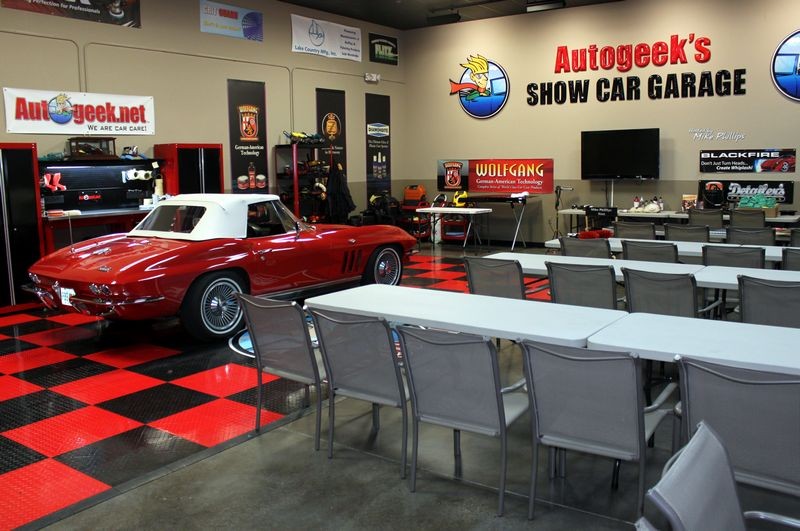
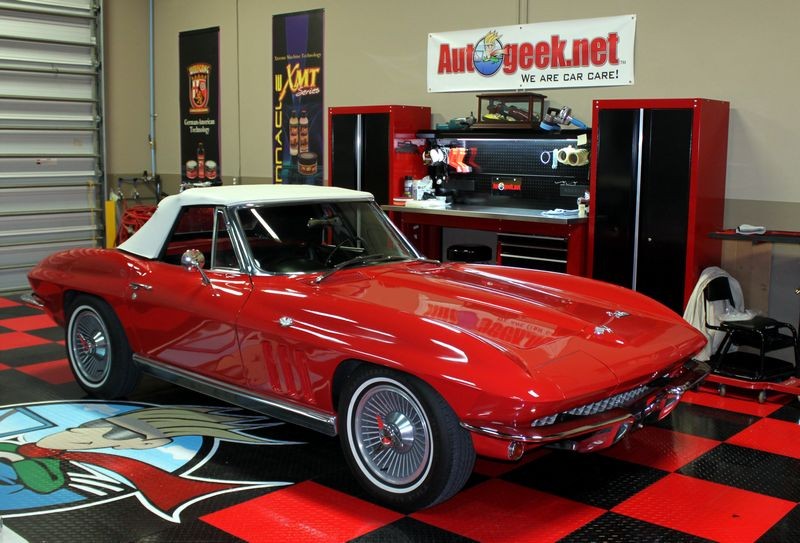

Inspecting the true condition of the paint
In the pictures above the paint looks very good but below is how it actually looked...
This is called, "The Sun Shot", it's when you move the car into full overhead sun and position the reflection of the sun onto the horizontal panels where it will reveal swirls, scratches and water spots.
The Sun Shot

Paint Condition
According to the chapter on paint condition categories in my how-to book, The Art of Detailing this paint fall into category #5 & #6 because it has both sever cobweb swirls and holograms.
5: Severely Neglected
Paint in this condition has deep swirls, scratches, water spots and oxidation. Paint in this condition has normal day-in, day-out wear-n-tear plus no real regular maintenance. Vehicles in this category are rarely washed on a regular basis and when they are washed they are washed improperly or taken through automatic car wash.
Cobweb Swirls and Scratches
Paint that is severely neglected means that when viewed in bright, overhead sunlight, there are so many swirls and scratches that the paint has an overall hazy appearance which blocks your view of the true color.
Water Spots
Paint that is in the severely neglected category can have Type I, Type II and Type III water spots on all horizontal panels and even the vertical panels if caused by a sprinkler or some type of water spray.
Severe Oxidation
Paint in this category has oxidized to the point where the surface has a uniform dull appearance to the horizontal surfaces and to some extent the vertical panels. Clear coats do oxidize but usually slower than single stage paints and don't normally get the whitish, chalky appearance with a rough texture common to old, neglected single stage lacquers and enamels. 6: Horrendous Swirls - Caused by the misuse of a rotary buffer
This category is primarily for cars that have been improperly buffed-out using a rotary buffer leaving the finish inflicted with rotary buffer swirls, holograms or buffer trails.
(Whatever term you like, they all mean the same thing).
The severity of the swirls can range from shallow to deep depending upon the pad and product used with the rotary buffer as well as technique or lack thereof.
The normal three culprits for paint in this condition are,
Dealer Installed Swirl Option
Bodyshop Installed Swirl Option
Detailer Installed Swirl Option Sad but true, the people in this industry that are supposed to know how to properly buff out a car normally either don't know or don't care. The results are the same and that's a swirled out car finish that someone else will have to undo.
Brinkmann Swirl Finder Light
Here's what the paint looks like when lit up with the Brinkmann Swirl Finder Light...

Doing a Test Spot Using a Rotary Buffer
A couple of days before the class I did a Test Spot for a number of reasons,
1. To ensure the paint could be restored.
2. To dial in a process that would undo the damage and restore a swirl-free, show car finish.
3. Get a feel for the paint itself, that is how soft or hard it is and how easy or difficult it would be to correct. The Major Correction or Cutting Step
Because every inch of ever body panel was filled with swirls and the goal is to remove as many of the defects as possible I chose to start out with an aggressive compound and a wool pad.
M105 with a W5000 Wool Pad on the DeWALT 849X
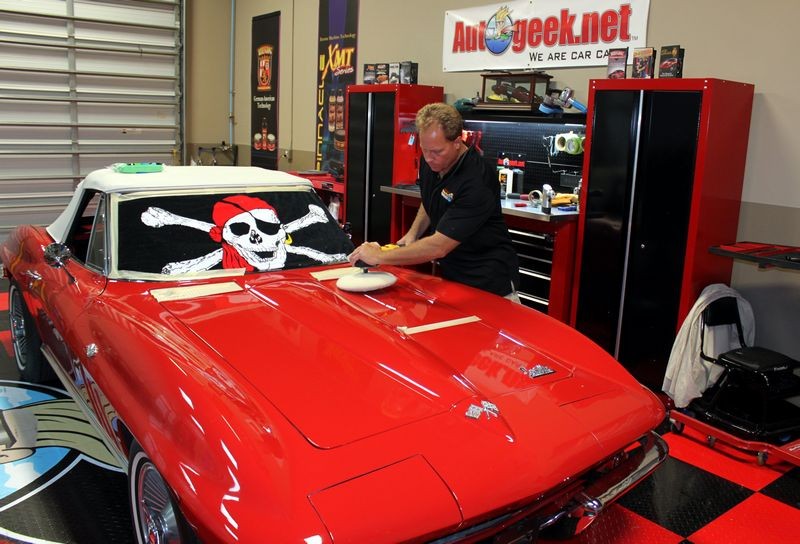
The Minor Correction or Polishing Step
After the cutting step the next thing to do is restore and maximize gloss and clarity by removing any holograms and haze left by the aggressive fibers that make up a wool cutting pad and the cutting action of the abrasives in the compound. Because M105 uses Super Microscopic Abrasive Technology, the majority of any holograms are not from the abrasives but from the individual fibers that make up a wool cutting pad and the downward rotating pressure applied to cut the paint.
Thus the swirls should be very shallow and easily removed with the companion or twin product to the M105 and that's the M205 Ultra Polish. For this I switched over to a foam polishing pad.
M205 with a 7" Softbuff Polishing Pad

Jeweling with a Rotary Buffer
After removing the holograms and polishing to a high gloss the paint looked flawless and ready to wax but instead I chose to squeeze a little more gloss and shine out of the paint by jewelling it with the same polish but I switched to a much softer foam finishing pad. For this I turned my polisher down to 600 RPM's and slowly moved the rotary buffer over the paint.
M205 with a 7" Softbuff Finishing Pad
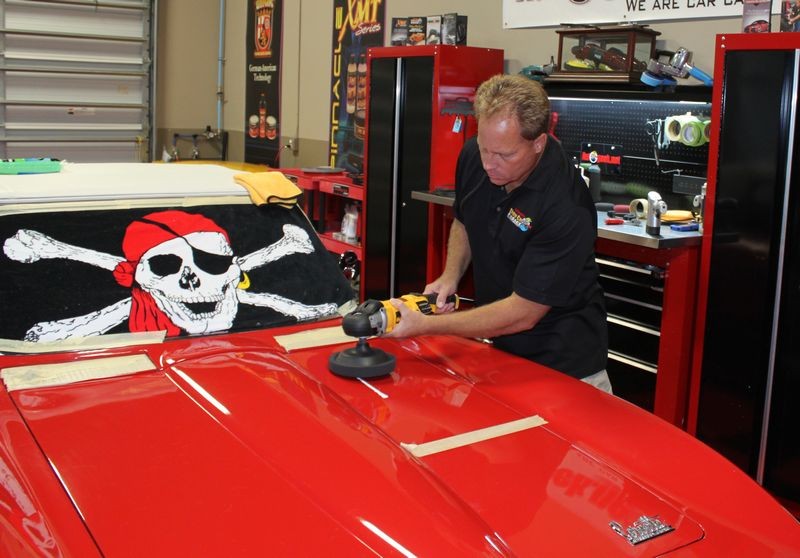
Using the Brinkmann to inspect the results...
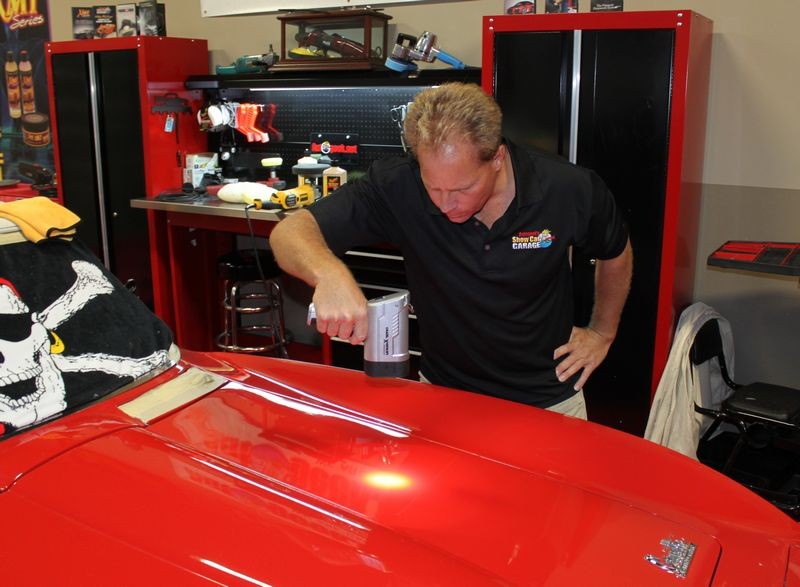
Inspection Results
Here are the results after doing the above three steps using the Brinkmann Swirl Finder Light and then overhead florescent lights.
Before

After

Overhead Florescent Lights
Here I've stood back and taken a picture from an angle lower, and flatter to the hood of the car with the overhead florescent lights placed over the tape-line.

Close-up
The below picture is the same exact picture above except I've cropped out the specific area to show before and after results.

Here's some of the tools I used for this test spot...
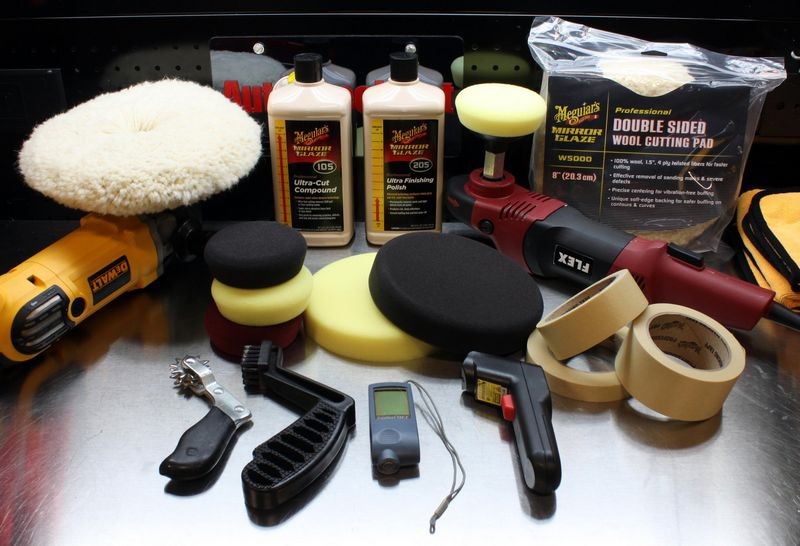
Conclusion
I performed the above test spot to answer 3 questions.
1. Can the paint be restored?
The answer to this question is a resounding "yes"
The paint was in severely neglected condition and the age of this paint job is not known but from my testing I proved the paint could be successfully restored. There are some paints that are past the point of no return and nothing you pour out of a bottle or scoop out of a can will fix them. That is not the case with the paint on this Corvette.
2. Can a process be dialed-in to restore a swirl-free, show car finish.
The answer to this question is "yes"
The Meguiar's Twins M105 and M205 provided all the cut we needed to remove the defects and using only two polishing steps restore the car to a swirl-free, show car finish.
3. Determine if the paint is on the soft side or the had side?
The answer to this was somewhere in the middle of soft and hard. Actually, it's in the sweet spot which not to had and not to soft and that's exactly where you want your car's paint to be.
-
Re: Picking up a Dewalt DWP849X Rotary?
-
-
Super Member

Re: Picking up a Dewalt DWP849X Rotary?
Thanks for the information overload Mike  . Before i purchased mine i read all that twice or more. . Before i purchased mine i read all that twice or more.
I have the Dewalt 849x and its easy to use and easy to learn on. The trigger is a little tricky at first if you want to bring up the rpm slowly. Bottom line... you will be glad you got it! (I also have a PC and a Flex 3401)
-
Super Member

Re: Picking up a Dewalt DWP849X Rotary?
I just received my new DeWalt 849x
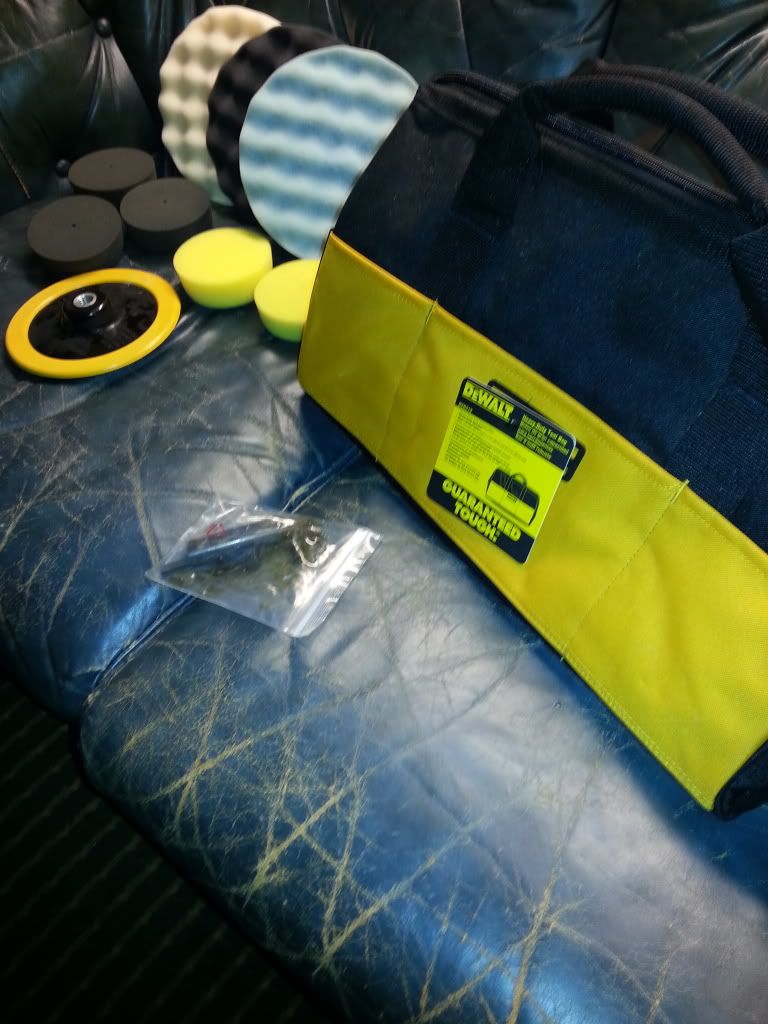
Here she is with a three inch BP
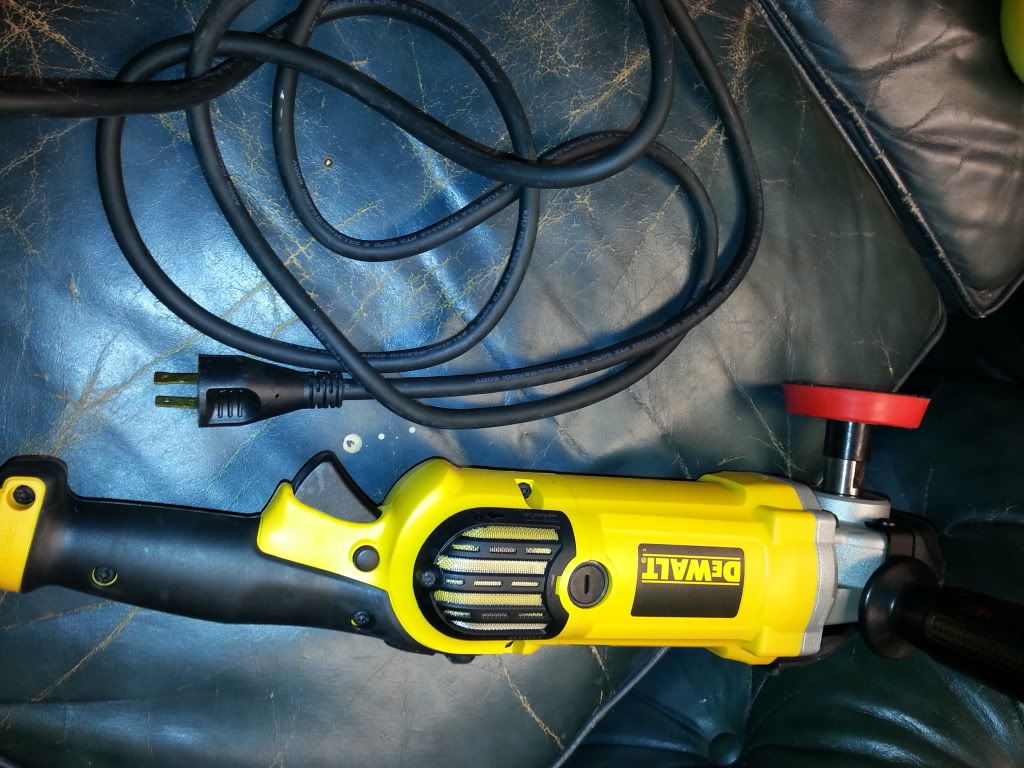
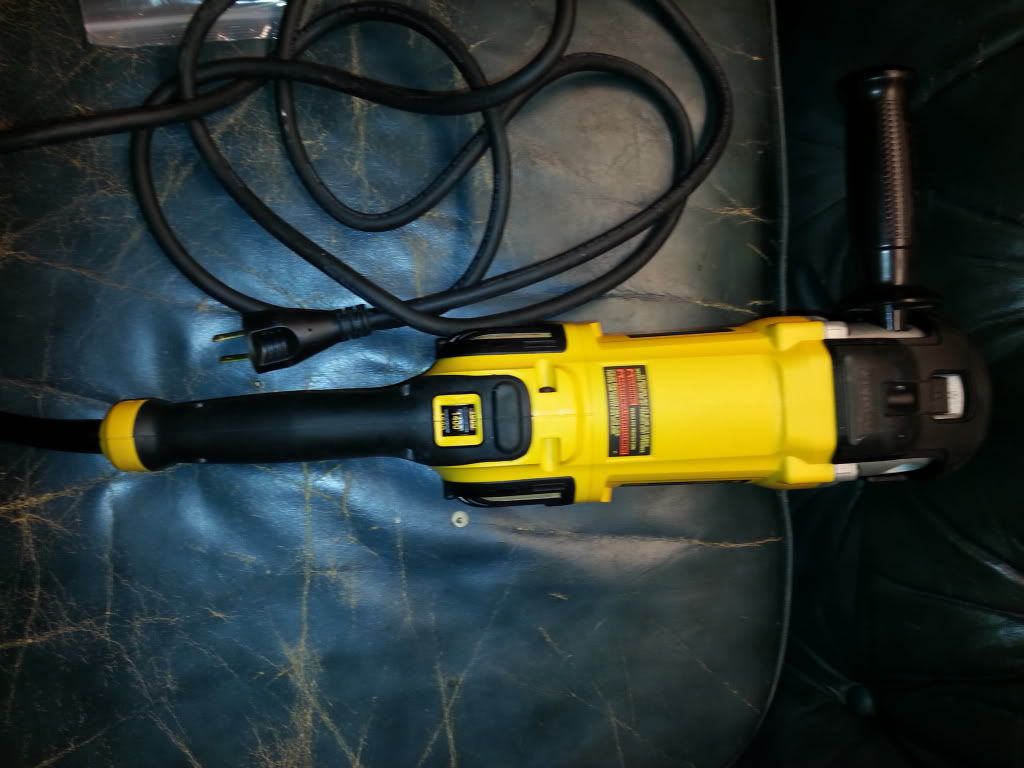
My first impression of it.
I've used rotaries for 30 years, my last one was a Makita which was stolen, not a bad tool but IMO the DeWalt 849x is much more superior to the Makita.
Slow start.
I'm not big on slow start rotaries but the 849x responds faster than I thought it would be, doesn't take long to get up to your desired speed and holds it there no matter what,with or without a load.
Soon as I took it out the bag I put on the7 inch BP on it, one by one I went through the gears, it responds very quickly going from one speed to the next which makes it nice when you have it on the paint, no jerking with this baby. 
Even set at the highest setting it's so quiet , with having so much power I was so happy to know it wasn't as loud as of my older Makita.
The speed dial.
Most rotaries speed dial reads in numbers, meaning 1,2,3,4 and so on.
The DeWalt's speed dial reads the RPM's 600, 1000, 1800 and so on so no guessing what speed your running which is very important IMO, I want to know for sure what speeds I'm running at all times.
The weight and balance.
Having a bit of weight really is a good thing, only the weight of the machine is needed, you don't have to add to it which saves on the arms.
It's balance is very, very good, I can control it with one hand if I wanted but I use my right hand on the handle end and put my palm over the rubber head that covers the gear box.
It's so easy to steer, you don't have to fight it even though it's powerful , what a wonderful thing. 
I have a 3,4, 5, 6 and 7 inch BP's so I can take on any job.
When you first begin to use it you'd swear it's a $500.00 machine but it's under $200.00.
DeWalt out did themselves on this model, if you need a rotary consider the 849x, you won't be disappointed IMHO.
Well worth the money 
-
Super Member

Re: Picking up a Dewalt DWP849X Rotary?
Thanks OP for asking this question, I am in the exact same "boat" as you! (Bad joke sorry)...
I am trying to get the scratches out of my gel coat and I realized my PC with microfiber pads and a compound isn't quite "cutting" it (sorry did it again).
The finish looks very glossy and the minor swirls are gone but it didn't touch the RIDS and transfer. Hate to invest in a rotary, pads, spur, etc for a one time correction but maybe I can find a good deal.
Let us know how it goes OP.
And thanks Mike for all the info, subscribed!
-
Re: Picking up a Dewalt DWP849X Rotary?
 Originally Posted by HateSwirls

I just received my new DeWalt 849x 
Here she is with a three inch BP
My first impression of it.
I've used rotaries for 30 years, my last one was a Makita which was stolen, not a bad tool but IMO the DeWalt 849x is much more superior to the Makita.
Slow start.
I'm not big on slow start rotaries but the 849x responds faster than I thought it would be, doesn't take long to get up to your desired speed and holds it there no matter what,with or without a load.
Soon as I took it out the bag I put on the7 inch BP on it, one by one I went through the gears, it responds very quickly going from one speed to the next which makes it nice when you have it on the paint, no jerking with this baby. 
Even set at the highest setting it's so quiet , with having so much power I was so happy to know it wasn't as loud as of my older Makita.
The speed dial.
Most rotaries speed dial reads in numbers, meaning 1,2,3,4 and so on.
The DeWalt's speed dial reads the RPM's 600, 1000, 1800 and so on so no guessing what speed your running which is very important IMO, I want to know for sure what speeds I'm running at all times.
The weight and balance.
Having a bit of weight really is a good thing, only the weight of the machine is needed, you don't have to add to it which saves on the arms.
It's balance is very, very good, I can control it with one hand if I wanted but I use my right hand on the handle end and put my palm over the rubber head that covers the gear box.
It's so easy to steer, you don't have to fight it even though it's powerful , what a wonderful thing. 
I have a 3,4, 5, 6 and 7 inch BP's so I can take on any job.
When you first begin to use it you'd swear it's a $500.00 machine but it's under $200.00.
DeWalt out did themselves on this model, if you need a rotary consider the 849x, you won't be disappointed IMHO.
Well worth the money 
Great input there Kevin! And boy what a good deal you got on that puppy too!!! 
I didn't realize it was that model though. Kewl indeed. Although weighing as much as it does it'll probably kill my back. (Don't have the reaching strength I used to.)
To the OP:
Funny enough, I was looking at that exact same buffer today. Home Depot has it for a buck fifty! Well I think it's about a buck sixty actually, but that's $100 less than anywhere else, including Lowes! Of course Lowes will price match so no big problem. Hmmm.... wonder if AG will price match that one? 
-
Super Moderator

Re: Picking up a Dewalt DWP849X Rotary?
 Originally Posted by cardaddy

To the OP:
Funny enough, I was looking at that exact same buffer today. Home Depot has it for a buck fifty! Well I think it's about a buck sixty actually, but that's $100 less than anywhere else, including Lowes! Of course Lowes will price match so no big problem. Hmmm.... wonder if AG will price match that one? 
We price match! See the link for details.
Price Match Promise
Similar Threads
-
By s500 in forum Rotary Buffers
Replies: 15
Last Post: 12-14-2014, 01:27 PM
-
By Mike Phillips in forum Rotary Buffers
Replies: 30
Last Post: 12-09-2013, 11:14 AM
-
By orcat in forum Flex Polishers
Replies: 10
Last Post: 11-20-2013, 08:58 PM
-
By cobraa in forum Product Reviews
Replies: 4
Last Post: 09-19-2011, 05:41 PM
 Members who have read this thread: 0
Members who have read this thread: 0
There are no members to list at the moment.
 Posting Permissions
Posting Permissions
- You may not post new threads
- You may not post replies
- You may not post attachments
- You may not edit your posts
-
Forum Rules
|
| S |
M |
T |
W |
T |
F |
S |
| 31 |
1
|
2
|
3
|
4
|
5
|
6
|
|
7
|
8
|
9
|
10
|
11
|
12
|
13
|
|
14
|
15
|
16
|
17
|
18
|
19
|
20
|
|
21
|
22
|
23
|
24
|
25
|
26
|
27
|
|
28
|
29
|
30
| 1 | 2 | 3 | 4 |
|












 Thanks:
Thanks:  Likes:
Likes:  Dislikes:
Dislikes: 

 Reply With Quote
Reply With Quote

















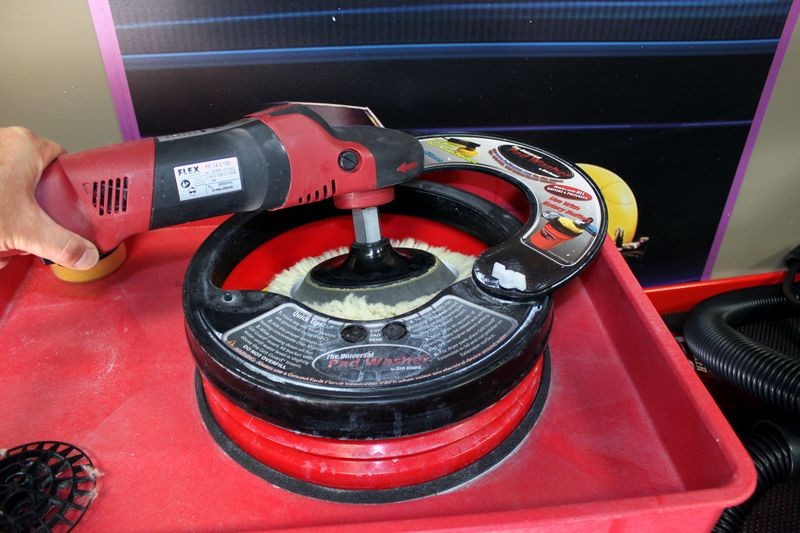
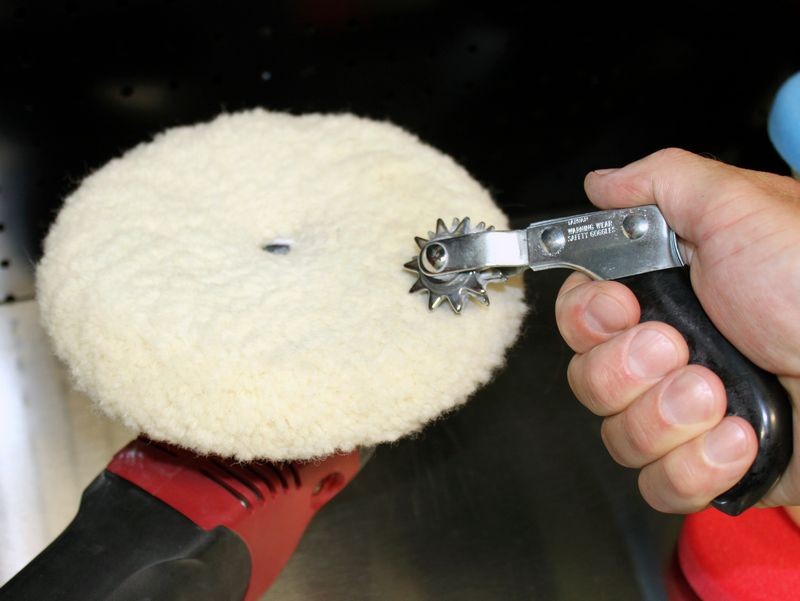


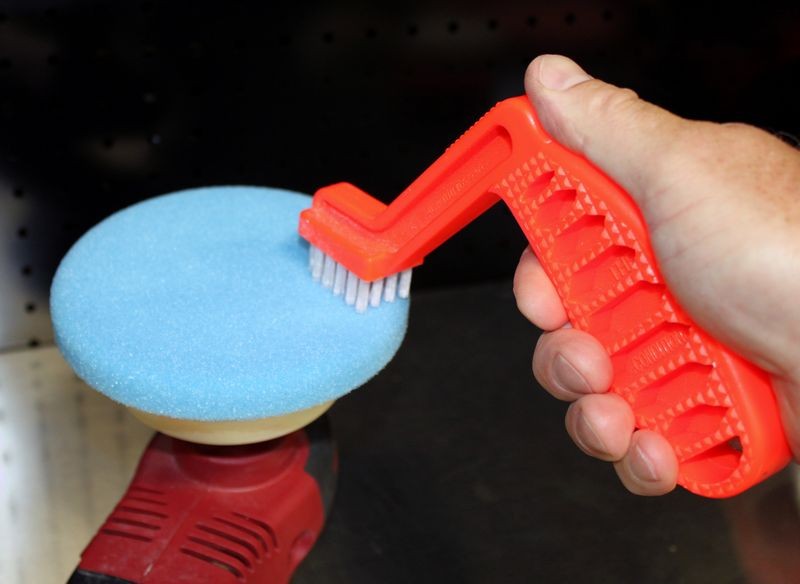

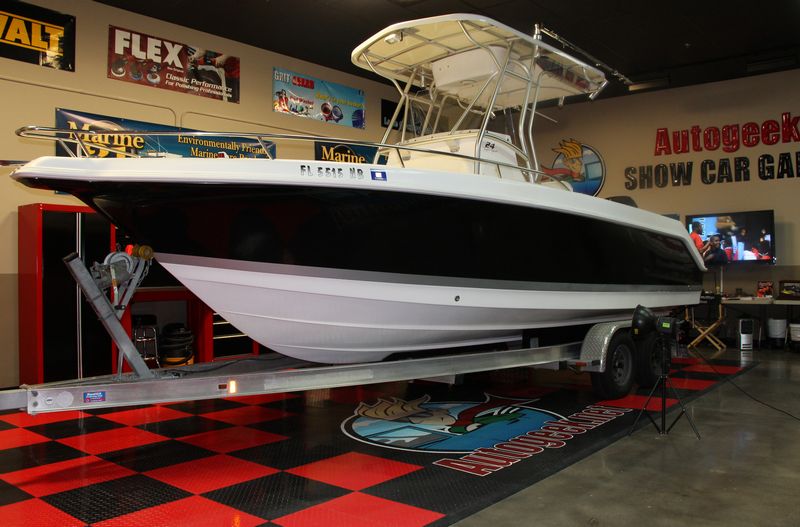
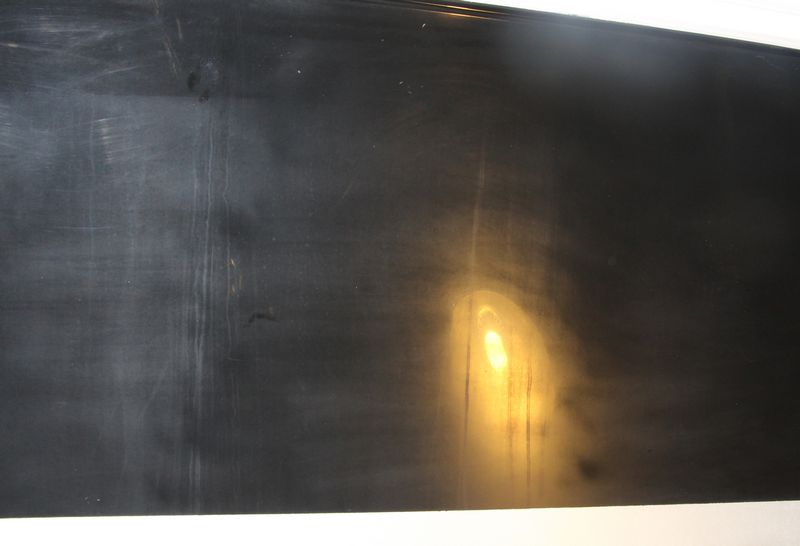
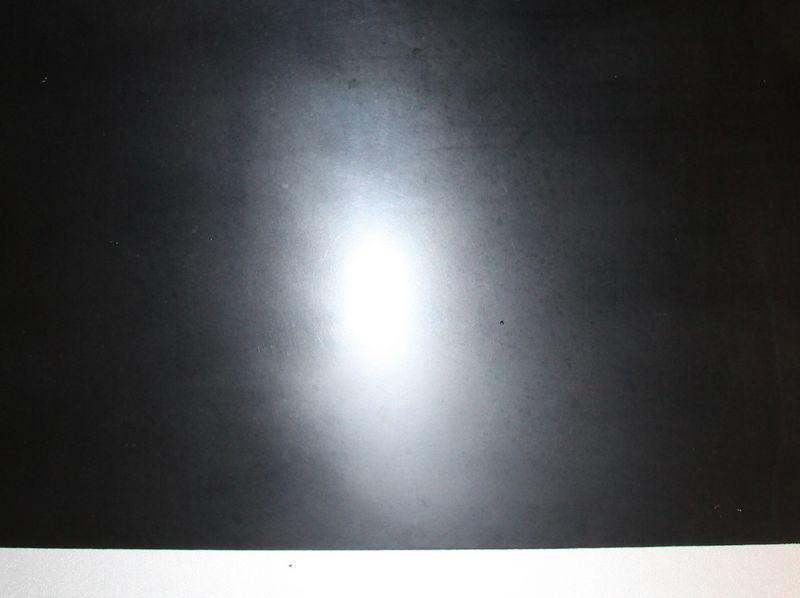
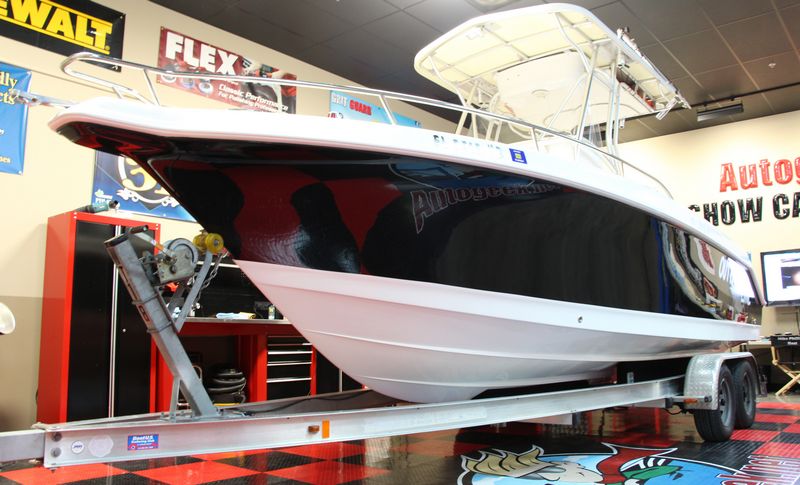
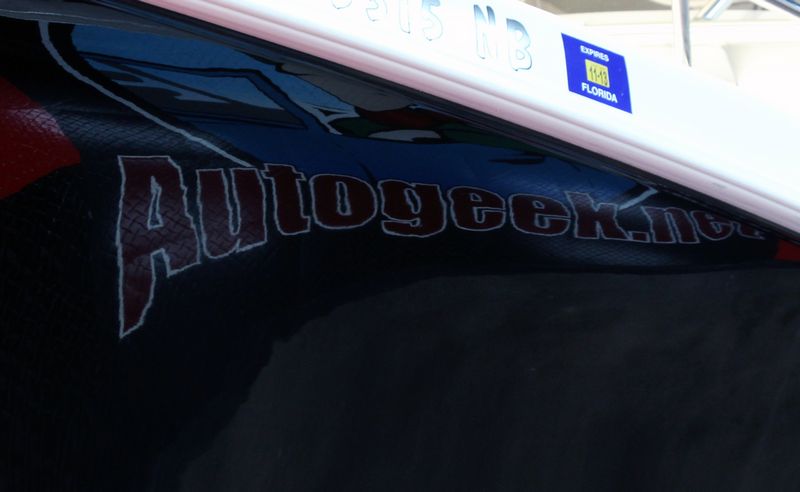

 . Before i purchased mine i read all that twice or more.
. Before i purchased mine i read all that twice or more.



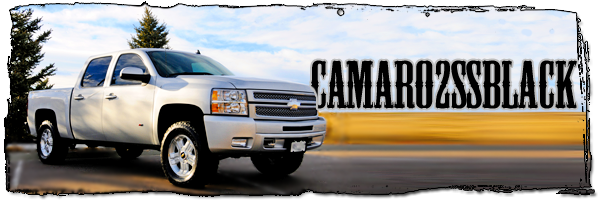



Bookmarks